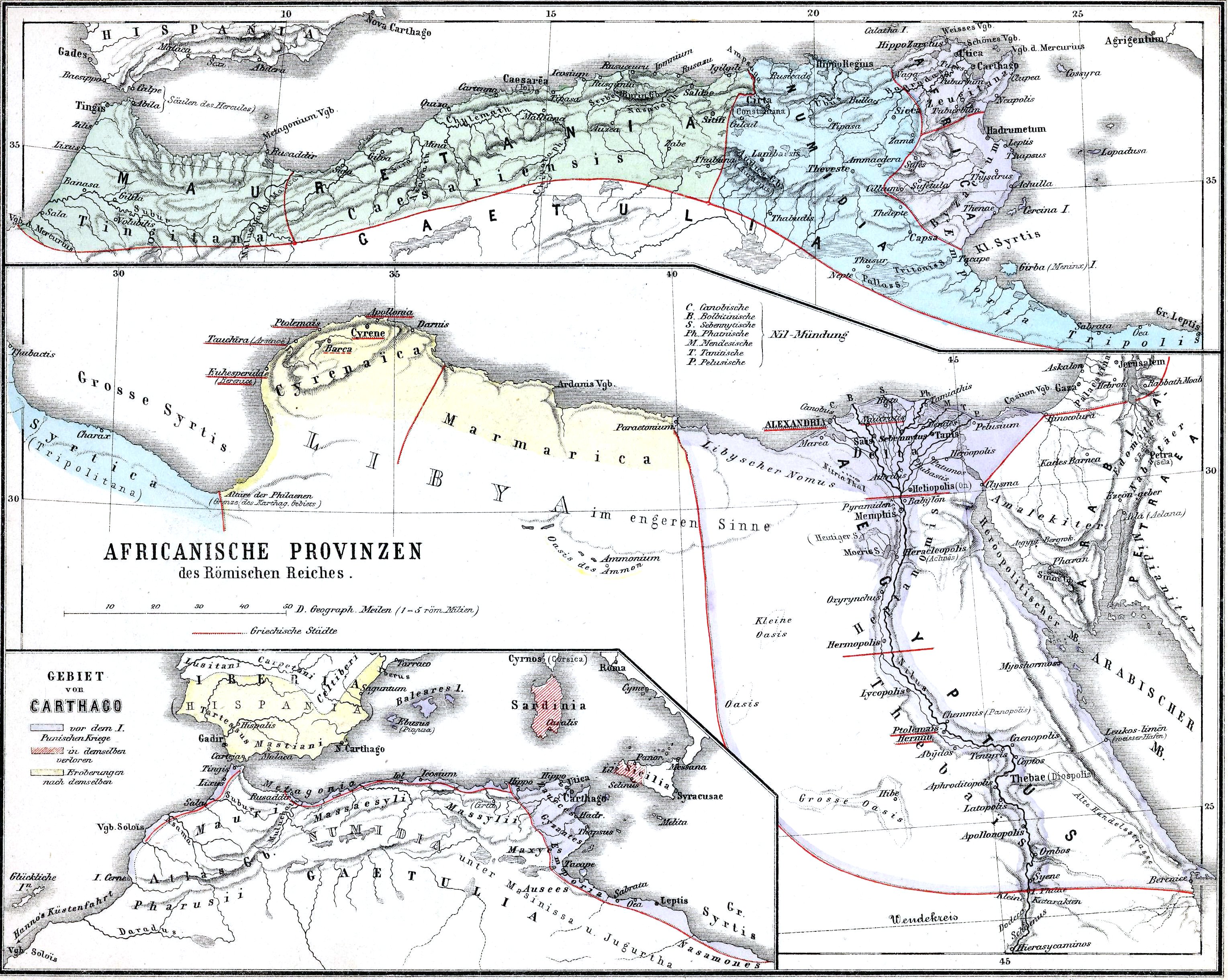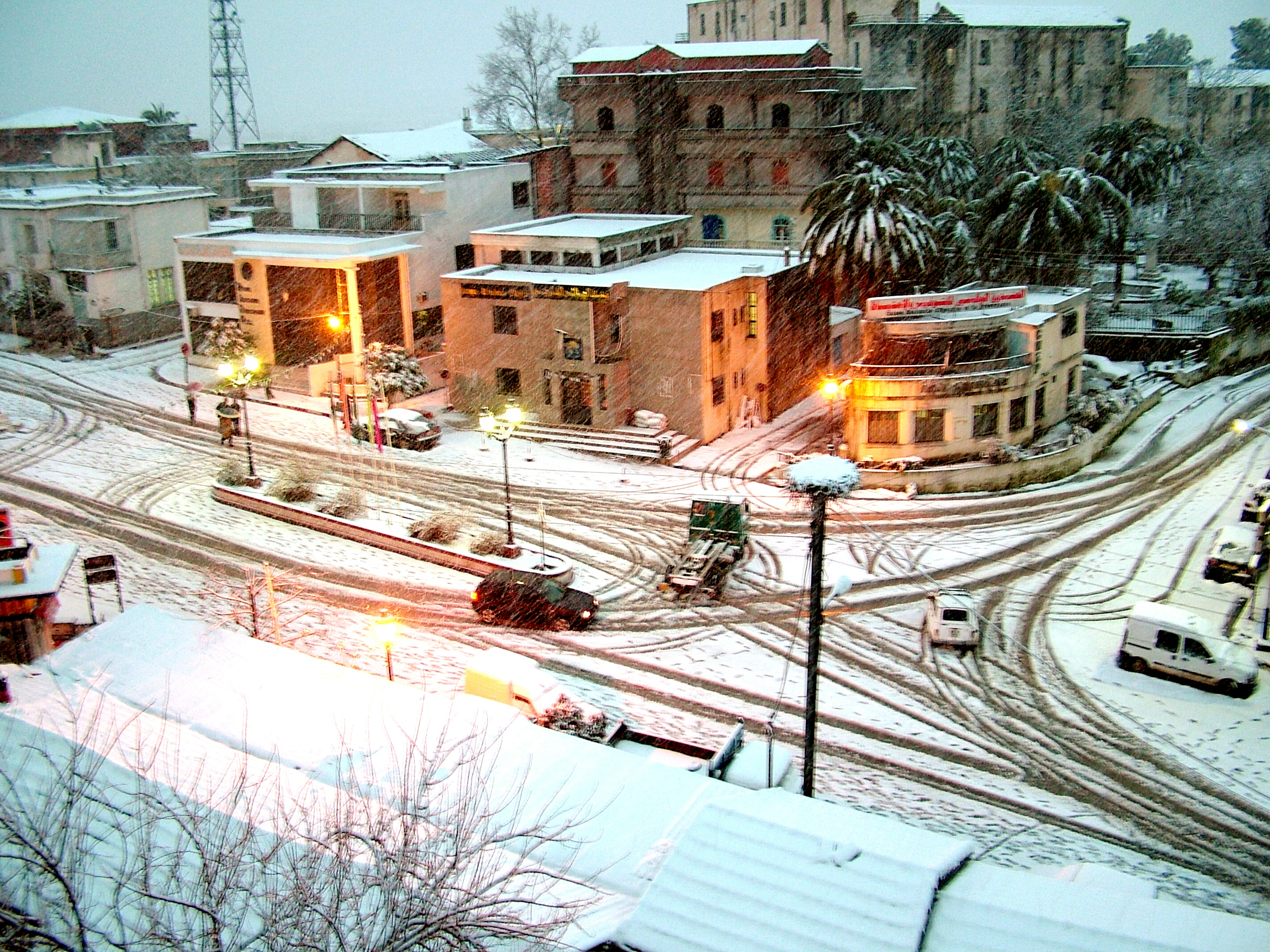Mulia, Numidia on:
[Wikipedia]
[Google]
[Amazon]
El Milia ( الميلية) is a town and commune in Jijel Province, Algeria.
The town of El Milia is located in the north-eastern Constantinois region. It lies between the cities of Jijel, Mila, Constantine and Skikda. The Mediterranean Sea is about twenty kilometers north of the town.
The territory of the municipality of El Milia is located northeast of the province of Jijel. It is the largest city area of the region.

 El Milia takes its name from the ancient city and Roman bishopric (see below) Mulia.
Home to many battles against French colonists, the region is one of the pillars of the war of independence and the fight against French colonial army.
Only small, isolated
El Milia takes its name from the ancient city and Roman bishopric (see below) Mulia.
Home to many battles against French colonists, the region is one of the pillars of the war of independence and the fight against French colonial army.
Only small, isolated
Mulia
at GCatholic.org. It has had the following incumbents, so far of the fitting Episcopal (lowest) rank : * Odilon Fages,
 The El Milia region has a Mediterranean climate characterized by warm summers and mild winters but is very humid. The temperature varies from 0c° in winter to 40c° in summer.
The El Milia region has a Mediterranean climate characterized by warm summers and mild winters but is very humid. The temperature varies from 0c° in winter to 40c° in summer.
GCatholic - (titular) bishopric
; Bibliography - ecclesiastical history * Pius Bonifacius Gams, ''Series episcoporum Ecclesiae Catholicae'', Leipzig 1931, p. 467 * Stefano Antonio Morcelli, ''Africa christiana'', Volume I, Brescia 1816, p. 233 * J. Mesnage,'' L'Afrique chrétienne'', Paris 1912, pp. 423–424 * H. Jaubert, ''Anciens évêchés et ruines chrétiennes de la Numidie et de la Sitifienne'', in ''Recueil des Notices et Mémoires de la Société archéologique de Constantine'', vol. 46, 1913, p. 64 {{Jijel Province El Milia District Communes of Jijel Province Jijel Province
Administration
The municipality of El Milia is composed of one hundred and one localities, villages and hamlets. El Milia is the eponymous capital ofEl Milia District
El Milia is a district in Jijel Province, Algeria.
It was named after its capital, the town of El Milia.
Municipalities
The district is further divided into 2 municipalities:
*El Milia
El Milia ( الميلية) is a town and commune in Jijel ...
.
Population
According to the 2009 census it has a population of 80,000. The term used to refer to the Arabic-speaking highlanders in the region of El Milia was ''Kabyle hadra''. The ethnic origin of these is that the first inhabitants of the region were the Kutama Berbers. In the 11th century, following the overthrow of theFatimid empire
The Fatimid Caliphate was an Ismaili Shi'a caliphate extant from the tenth to the twelfth centuries AD. Spanning a large area of North Africa, it ranged from the Atlantic Ocean in the west to the Red Sea in the east. The Fatimids, a dyna ...
and the fall of the Arab, a settlement was founded by various Berbers who came from other regions of Algeria, particularly the highlands, and from Morocco. They moved to El Milia and its surroundings, but never mixed with Hilali Arab tribes, and later Muslim refugees from Andalusia expelled from Spain. There was also more recently a small Ottoman influx.
Among the tribes that are in the city of El Milia and the region: Ouled Aidoun, Fergane Beni, Beni Belaid, Beni meslim, Tileman, Feteh Beni, Beni Aicha, Beni Khettab, Ouled Ali, Ouled Aouat, Ouled Boufaha, Mechat El Achache, Beni Caid, Ouled Mbareek, Telilane Beni and Beni Sbih.
History
mechta
''Luna 1'', also known as ''Mechta'' (russian: Мечта , '' lit.'': ''Dream''), ''E-1 No.4'' and ''First Lunar Rover'', was the first spacecraft to reach the vicinity of Earth's Moon, and the first spacecraft to be placed in heliocentric or ...
s existed in the area until 1860 when a small town was built, under the direction of the department of Constantine, in order to subdue the tribe of Ouled Aidoun. Under the French occupation the area was part of Kabylia East. Together with the new town came a borj (fortress) to control the Ouled Aidoun. The tribe, humiliated and ruined by new taxes, held a meeting and decided to attack the next day at dawn and take control of the French military tower. This revolt of February 14, 1871 marked the beginning of a general armed uprising (the Mokrani Revolt) in eastern Kabylie.
The uprising that took place in two phases lasting about 9 months, during which the French camp was destroyed, and the tower besieged for over a week. The French occupation forces then mobilized some 10,000 soldiers to try to quell the uprising, and their superiority in armaments gave them the upper hand. In retaliation against the population, the French imposed additional taxes, confiscated land and enacted arrests and deportations.
During the War of Independence, the tribes of the region of El Milia, then part of the historic wilaya II of North Constantine, played a large role in the fight against the settlers, particularly in the attacks of 20 August 1955. On that day and the days that followed, the French colonial troops suffered huge losses. This impelled Youcef Zighoud to declare "If we lost militarily and won politically in north-eastern Constantine, that is to say in Skikda and its periphery, I can tell you that we won both militarily and politically in the northwest of Constantine, particularly in El Milia. "
Ecclesiastical history
Mulia was among the many towns in the Roman province ofNumidia
Numidia ( Berber: ''Inumiden''; 202–40 BC) was the ancient kingdom of the Numidians located in northwest Africa, initially comprising the territory that now makes up modern-day Algeria, but later expanding across what is today known as Tunis ...
, in the papal sway, that were important enough to become a suffragan diocese
A suffragan diocese is one of the dioceses other than the metropolitan archdiocese that constitute an ecclesiastical province. It exists in some Christian denominations, in particular the Catholic Church, the Coptic Orthodox Church of Alexandria ...
.
It only historically documented bishop was Peregrinus, participant at the synod called at Carthage by king Huneric of the Vandal Kingdom in 484, after which he was exiled like most Catholic bishops, unlike their heretical Donatist counterparts.
Morcelli list a second Latin bishop (in 393), whom Mesnage and Jaubert assign to the diocese of Mutia.
Titular see
The Diocese of Mulia was nominally restored in 1925 as Latin titular bishopric of Mulia (Latin = Curiate Italian) / Mulien(sis) (Latin adjective)at GCatholic.org. It has had the following incumbents, so far of the fitting Episcopal (lowest) rank : * Odilon Fages,
Oblate Missionaries of Saint Francis de Sales
The Missionaries of St. Francis de Sales (MSFS), also known as the Fransalians, was founded in Annecy, France on 24 October 1838 by Fr. Peter Mermier under the patronage of St. Francis de Sales. The political disturbances in the country, especial ...
(O.S.F.S.) (born France) (15 June 1928 - 14 Oct 1939) as Coadjutor The term coadjutor (or coadiutor, literally "co-assister" in Latin) is a title qualifier indicating that the holder shares the office with another person, with powers equal to the other in all but formal order of precedence.
These include:
* Coadj ...
Vicar Apostolic of Orange River (South Africa) (1928.06.15 – 1932.11.21); next succeeded as last Apostolic Vicar of Orange River (later Diocese of Keimoes
In church governance, a diocese or bishopric is the ecclesiastical district under the jurisdiction of a bishop.
History
In the later organization of the Roman Empire, the increasingly subdivided provinces were administratively associate ...
, South Africa) (1932.11.21 – death 1939.10.14)
* István Fiedler (15 Dec 1939 - death 25 Oct 1957) as emeritate; formerly Bishop of Oradea Mare ( Romania) (1930.10.16 – 1939.12.15) and Bishop of Satu Mare
Satu Mare (; hu, Szatmárnémeti ; german: Sathmar; yi, סאטמאר or ) is a city with a population of 102,400 (2011). It is the capital of Satu Mare County, Romania, as well as the centre of the Satu Mare metropolitan area. It lies in the ...
(Romania) (1930.10.16 – 1939.12.15)
* Theodorus van den Tillaart, Divine Word Missionaries (S.V.D.) (14 Nov 1957 - 3 Jan 1961) as last Apostolic Vicar of Atambua ( Indonesia) (1957.11.14 – 1961.01.03), next (see) promoted first Bishop of Atambua (1961.01.03 – retired 1984.02.03), died 1991
* Guy-Marie-Joseph Riobé (22 July 1961 - 23 May 1963) as Coadjutor Bishop
A coadjutor bishop (or bishop coadjutor) is a bishop in the Catholic, Anglican, and (historically) Eastern Orthodox churches whose main role is to assist the diocesan bishop in the administration of the diocese. The coadjutor (literally, "co ...
of Orléans (France) (1961.07.22 – 1963.05.23), next succeeded as Bishop of Orléans (1963.05.23 – death 1978.07.18)
* Waldyr Calheiros Novaes
Waldyr Calheiros Novaes, (July 29, 1923 – November 30, 2013) was a Brazilian prelate of the Catholic Church.
Waldyr Calheiros Novaes was born in Murici, Alagoas
Alagoas (, ) is one of the 27 federative units of Brazil and is situated in th ...
(25 Feb 1964 - 20 Oct 1966) as Auxiliary Bishop of Archdiocese of São Sebastião do Rio de Janeiro
In church governance, a diocese or bishopric is the ecclesiastical district under the jurisdiction of a bishop.
History
In the later organization of the Roman Empire, the increasingly subdivided provinces were administratively associate ...
( Brazil) (1964.02.25 – 1966.10.20); next Bishop of Barra do Piraí–Volta Redonda (Brazil) (1966.10.20 – retired 1999.11.17), died 2013
* Oswald Thomas Colman Gomis (9 April 1968 - 2 Nov 1995) as Auxiliary Bishop of Archdiocese of Colombo (Sri Lanka
Sri Lanka (, ; si, ශ්රී ලංකා, Śrī Laṅkā, translit-std=ISO (); ta, இலங்கை, Ilaṅkai, translit-std=ISO ()), formerly known as Ceylon and officially the Democratic Socialist Republic of Sri Lanka, is an ...
) (1968.04.09 – 1995.11.02); next Bishop of Anuradhapura (Sri Lanka) (1995.11.02 – 2002.07.06), President of Bishops' Conference of Sri Lanka (1998 – 2004), President of Federation of Asian Bishops' Conferences (2000 – 2005), Metropolitan Archbishop of above Colombo (2002.07.06 – retired 2009.06.16)
* John Raymond Manz
John is a common English name and surname:
* John (given name)
* John (surname)
John may also refer to:
New Testament
Works
* Gospel of John, a title often shortened to John
* First Epistle of John, often shortened to 1 John
* Second ...
(23 Jan 1996 - ...) as Auxiliary Bishop of Archdiocese of Chicago (Illinois, USA) (1996.01.23 – ...)

Geography
The region of El Milia is characterized by a very rugged mountainous terrain, mountains occupy 82% of the total area, they peak at 1200 m. Characterized by a pristine coastline and small mountains covered by dense enough vegetation and water sources. * The lowland areas, located in the valleys of Oued el Kebir Oued Boussiaba and small plains of Oued Z'hour. * Areas of mountains, located around the city. These are characterized by abundant vegetation cover and a network of rivers.Climate
See also
* List of Catholic dioceses in AlgeriaReferences
Sources and external links
GCatholic - (titular) bishopric
; Bibliography - ecclesiastical history * Pius Bonifacius Gams, ''Series episcoporum Ecclesiae Catholicae'', Leipzig 1931, p. 467 * Stefano Antonio Morcelli, ''Africa christiana'', Volume I, Brescia 1816, p. 233 * J. Mesnage,'' L'Afrique chrétienne'', Paris 1912, pp. 423–424 * H. Jaubert, ''Anciens évêchés et ruines chrétiennes de la Numidie et de la Sitifienne'', in ''Recueil des Notices et Mémoires de la Société archéologique de Constantine'', vol. 46, 1913, p. 64 {{Jijel Province El Milia District Communes of Jijel Province Jijel Province